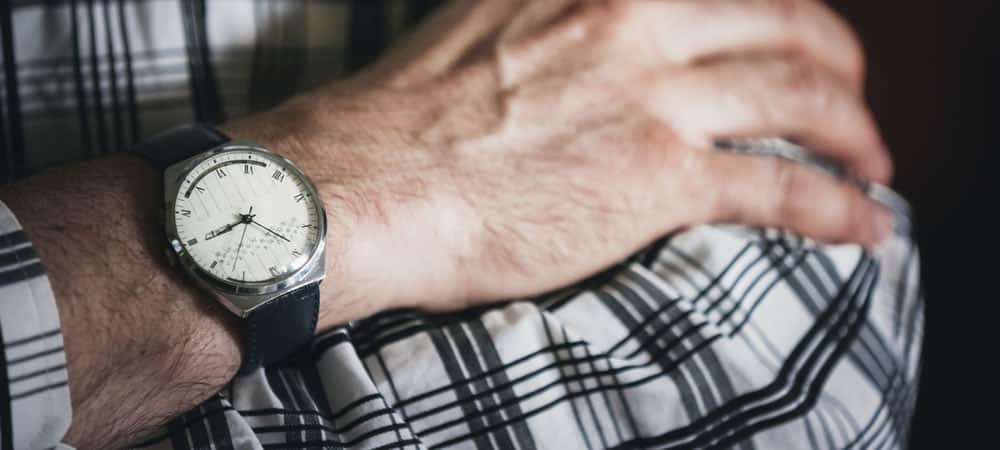A watch can be your wardrobe’s most bank balance-busting element. Although going by the basic cost-per-wear calculation you might do to justify your outlay (“I’ll probably wear this every day for 100 years, right?”), its longevity means it probably offers a better return on investment than most fast fashion pieces.
Still, you don’t always need to stump up the sticker price. Thanks to many timepieces’ lengthy shelf life and other watch fans’ fluctuating tastes (and fortunes), your money often goes further in the pre-owned market.
Yet opting for second-hand isn’t just about boosted buying power. “You can find an individual, unique timepiece that’s rarely available,” says Laura Warrilow, Watches of Switzerland’s head of pre-owned watches. “You can’t just pick up the phone and order ten of the same thing.”
But searching the pre-owned market for a steal does come with its risks. Most of us know not to buy even the most competitively priced ‘Batek Bhilippe’ from a guy in a trench coat, but what about that snip of a Rolex Submariner you snared on eBay? We hate to say it, but the real victim is not the guy on the other end, despite that ‘original’ packaging, paperwork and serial number.
Future Past
For all their claims of enhanced accuracy and engineering ingenuity, mechanical watches are retro. As we’ve discussed previously, cogs and gears are redundant technology – so why buy a modern version of something old, when you could have the original?
“Vintage watches were at the forefront of technology in their day,” says The Watch Magazine editor, Andrew Morgan. “A new Rolex today is a nice watch, a luxury piece, but it’s nothing more than a nostalgia fix or a bit of wrist branding. A vintage watch is the technology that people used to wear, and that carries a lot of strength for some people.”
Equally enticing are the discounts which can be had on designs that brands are increasingly revisiting in order to create modern iterations. Take, for example, the glut of 1950s- and 1960s-style timepieces released in recent years, including the Omega Seamaster Aqua Terra. Did you know you could stand to save thousands by hunting down one of the originals instead? A vintage Seamaster is around an eighth of the price of the re-release, according to Andrew Morgan.
 The Omega Seamaster Aqua Terra has been re-released, but you can save thousands on the vintage market.
The Omega Seamaster Aqua Terra has been re-released, but you can save thousands on the vintage market.
There are also size considerations. Modern watches tend towards the alarm clock, but dial back forty years and faces rarely exceeded 40mm. “It can be more appealing for someone who enjoys watches but who doesn’t want people ogling what’s on their wrist,” says Morgan.
If you’re daintier of arm, plumping for pre-owned could mean you actually find a watch that fits, rather than wearing something that makes you look as if you might’ve just nicked your dad’s.
Buyer Beware
Though websites promise savings, it pays to be suspicious. There are more people trying to rip you off than offer you a great deal, so it’s best to treat everything as fake until you know for sure it’s not. eBay has a thriving watch market, but when it comes to prices beyond a few hundred pounds, you’re in sketchy territory.
“It’s fine for buying a watch at a lower price,” says Martin Arnold, owner of one of the UK’s pre-eminent pre-owned watch institutions, Austin Kaye. “But if you’re spending thousands of pounds, you’re in dangerous territory.”
Bricks-and-mortar stores may charge a premium, but they offer warranties; that added outlay buys you peace of mind that your new purchase won’t fall apart the first time you strap it on. Watches of Switzerland, for example, can guarantee your ‘new’ vintage watch for 24 months because all of their models are serviced either at the watch’s original factory or by watchmakers who have been accredited by the manufacturer.
“Where else can you buy a 30-year-old Submariner with a two-year warranty?” says Laura Warrilow.
 A vintage Rolex Submariner
A vintage Rolex Submariner
If you do decide to venture into auctions – or even think you’ve found a rare piece in a charity shop – then do your research before you purchase. Less above board dealers often create watches from spare parts, attaching rarer parts to less valuable movements and cases. And in the second-hand watch game, rare means expensive.
“In a lot of cases, there are people who buy the watch and a desirable dial separately – both genuine – and transplant one into the other,” says Morgan. These Frankenwatches are only shown up for what they truly are when you send what you think is a £100,000 ‘Paul Newman’ Daytona to Rolex to be serviced, and they promptly send it back with a snarky note requesting you refrain from tampering with their products.
 A vintage Omega Seamaster
A vintage Omega Seamaster
So, how to find the real deal? Look for a watch with its original box and papers. A recent service by the maker – and the documents to prove it – should allay your fears. But if you sense anything’s off, move on swiftly.
If you do buy, be aware that older watches need more care than their comparatively hardy modern siblings. A service at a reputable dealer every six years is the least you should expect, but for older or more valuable pieces, Warrilow recommends bringing your watch in every 24 months for a check-up.
Older pieces need more care on-wrist as well. “You wouldn’t drive a vintage car every day, nor would you thrash while driving it,” she says. “So don’t expect a vintage watch to have shock resistance and so on.”
Current Examples: Austin Kaye
- Vintage Rolex Oyster Perpetual 1965

- Vintage Iwc 18ct Gold Automatic 1965

- Vintage Omega Seamaster 9ct Gold Automatic 1967

- Patek Philippe Gents Calatrava 3802 18ct White Gold Automatic 2002

- Pre-owned Rolex Submariner 16800 1988

- Vintage Omega Speedmaster Mark 4.5 Automatic 1985

Current Examples: WatchFinder
- Omega Speedmaster Moonwatch 1999

- Omega Seamaster 300m

- Rolex Gmt Master 1970

- Rolex Day-date 1981

- Iwc Portuguese Chrono 2003

- Tag Heuer Monaco 1970

Current Examples: The Watch Gallery
- Pre-owned Omega Speedmaster

- Pre-owned Rolex Explorer Ii

- Pre-owned Rolex Gmt Master Ii

- Pre-owned Rolex Submariner Date

- Pre-owned Rolex Explorer

- Pre-owned Rolex Yachtmaster

Final Word
Straight from the factory watches are a pricey purchase that may not provide much return on your investment should you tire of what’s on your wrist in a year. But seeking out something second-hand could mean you find a style that’s less likely to depreciate, and that no one else has, brimming with its own storied history.
Which models do you think have aged well, and which brands stand the test of time? Is the risk that comes with age worth taking to wear something unique?
And what’s your top tip for picking up a horological bargain?
Let us know by commenting below.








